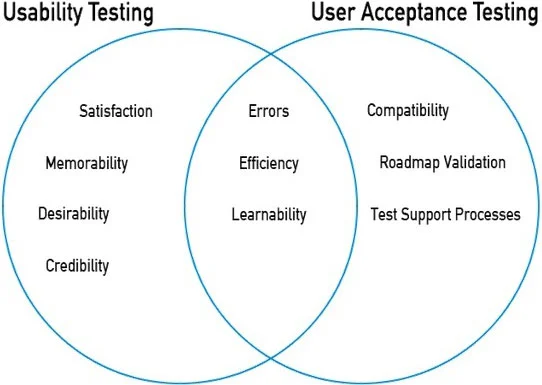User acceptance testing and usability testing are two easy confusing concepts. But overall, they go from a different perspective…

User Acceptance Testing
UAT is the last phase of the software testing process. During UAT, actual software users test the software to make sure it can handle required tasks in real-world scenarios, according to specifications. UAT is one of the final and critical software project procedures that must occur before newly developed software is rolled out to the market.
Usability Testing
Usability testing refers to evaluating a product or service by testing it with representative users. Typically, during a test, participants will try to complete typical tasks while observers watch, listen and takes notes. The goal is to identify any usability problems, collect qualitative and quantitative data and determine the participant’s satisfaction with the product.
The detailed comparison between Alpha testing and Beta testing is as below:
Typical Usability Test Scenario
- The facilitator will welcome the participant and explain the test session, ask the participant to sign the release form, and ask any pre-test or demographic questions.
- The facilitator explains thinking aloud and asks if the participant has any additional questions. The facilitator explains where to start.
- The participant reads the task scenario aloud and begins working on the scenario while they think aloud.
- The note-takers take notes of the participant’s behaviours, comments, errors and completion (success or failure) on each task.
- The session continues until all task scenarios are completed or time allotted has elapsed.
- The facilitator either asks the end-of session subjective questions or sends them to an online survey, thanks the participant, gives the participant the agreed-on incentive, and escorts them from the testing environment.